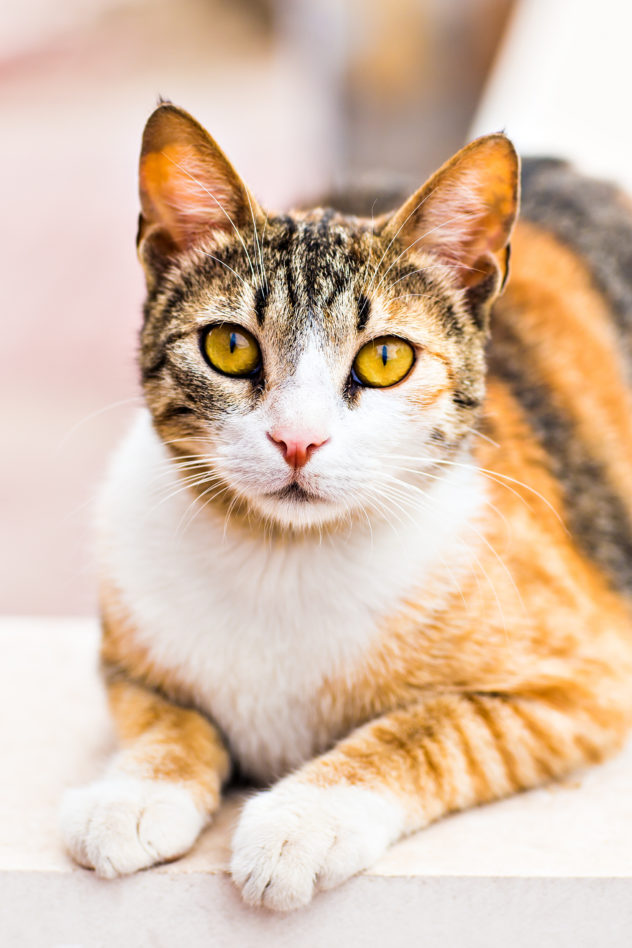By Wendy C. Brooks, DVM, DipABVP
 Spaying your cat is an important part of basic cat health care. Cat spaying at a young age prevents mammary cancer and spaying at any age prevents unwanted kittens, noisy heat cycles, and possibly even urine marking in the house. The following is a list of frequently asked questions gleaned from years of veterinary practice as well as from answering questions online. We have found that even though the cat spay is a routine and commonly performed procedure, many pet owners still have questions.
Spaying your cat is an important part of basic cat health care. Cat spaying at a young age prevents mammary cancer and spaying at any age prevents unwanted kittens, noisy heat cycles, and possibly even urine marking in the house. The following is a list of frequently asked questions gleaned from years of veterinary practice as well as from answering questions online. We have found that even though the cat spay is a routine and commonly performed procedure, many pet owners still have questions.
What is actually removed during cat spaying?
Cat spaying is an ovariohysterectomy, which means that both the ovaries and the uterus are removed. The cervix is tied off, leaving the vagina to end in a blind sac. Since it is the ovaries that are responsible for the heat cycles, possible mammary tumor development, and behavior problems, it is crucial that the ovaries be removed intact; some veterinarians leave the uterus behind, though, it is generally regarded as best to remove the entire tract, uterus included.
How long will my cat stay in the hospital?
Some hospitals prefer to keep surgery cases overnight so that they can rest in a properly confined area; some veterinarians believe that this first night of confinement helps the incision in healing. Some hospitals and most spay clinics will release the cat on the same day as surgery so that she may be observed at home in case of problems. Either way is legitimate and largely depends on the preference and philosophy of the doctor in charge of setting policy.

Will she have stitches?
Some veterinarians always place skin stitches; some veterinarians never do and prefer to close the incision with “buried” stitches, which are internal. The spay incision is closed in several layers (the abdominal muscles, the tissue under the skin, and the skin itself may all be closed separately). Skin stitches necessitate a return visit for a recheck, which is always a good idea after an abdominal surgery. Obviously, it may be more convenient for the owner not to have to make a return trip and it may be simpler not to have to worry about the cat pulling out her skin stitches and causing herself injury. Some hospitals employ both methods though aggressive or feral cats almost always receive buried sutures so as to eliminate possible bite injury to the staff at suture removal.
What can I expect regarding recovery period/incision care?
One of the advantages of keeping cats overnight after spaying is that they usually go bouncing out of the hospital as if nothing has happened. Some cats will not eat for the first day or so but if the cat does not seem back to normal by the day following discharge, veterinarians would like to know about it.
Cats discharged on the same day as surgery may experience more soreness if not confined to a small area. Food and water are generally withheld until the next day or late that night and the cat should be kept quiet and not allowed outside. Cats should not be discharged while still groggy in any way from anesthesia as they are a danger to themselves and to their human handlers. Additional pain medication may be prescribed.
Later in the recovery period, it is not unusual to notice swelling at the incision site. Cats often react this way to internal sutures and this kind of swelling is common and resolves spontaneously. Such swellings are firm and there is no fluid drainage or bleeding from the incision. They generally resolve in 3 to 4 weeks and are a reaction to the dissolving of internal stitches. That said, it is prudent for any incisional swelling to be checked out. If the cat has been overly active, she can break internal stitches, which could be a problem.
Any fluid drainage from the incision is abnormal and if possible the cat should be rechecked by the veterinarian who performed the spay.
What if she is in heat at the time of spay?
Some female cats are disruptively annoying when they are in heat, yowling and carrying on and they are spayed to end the heat quickly. Other cats are spayed in heat randomly when the owner does not realize that the cat is in heat. Either way the spay is slightly more difficult due to the engorgement of the tissues and larger blood vessels. Spaying in heat does not carry a significant risk to the cat but, since extra surgery time is frequently required, an extra charge may be incurred.
Occasionally spaying a cat in heat leads to dramatic mammary gland development in the recovery period. This is because the sudden drop in progesterone levels that happen after removing the active ovaries mimics the drop in progesterone that accompanies giving birth to kittens. The subsequent mammary development (called mammary hyperplasia) can be spectacular but generally resolves without treatment as hormones normalize.

What if she is pregnant at the time of spay?
Cat spaying can be performed at any time during the course of pregnancy. Often, the owner is unaware that the cat is pregnant. If there is any question, make it clear to your veterinarian what your wishes are should your cat be found pregnant. The incision can be closed and the pregnancy can proceed or the spay can proceed and the developing kittens will be removed along with the rest of the uterus. Due to extra work and surgery time, most veterinarians will charge an extra fee for spaying a pregnant animal. Some veterinarians will not knowingly spay a pregnant animal after a certain stage of pregnancy. At my hospital, we are commonly asked what to do about newly adopted stray cats thought to be pregnant. As we work with numerous rescue groups, we are keenly aware of the pet over-population problem. We encourage spaying of strays or newly adopted female cats regardless of pregnancy. There are simply too many kittens without homes as it is.
Will spaying affect her personality?
The female cat spends at least half the year with her reproductive tract dormant (cats only cycle seasonally, primarily in the spring and summer). This means that, behaviorally speaking, she acts spayed most of the time and no personality change should be noted. This said, it is important to realize that a cycling cat can be extremely solicitous of affection. This kind of playful, flirtatious behavior will stop with spaying.
How long after having kittens can she be spayed?
The mammary (breast) development that comes with nursing can make the spay surgery more difficult. Ideally, a month after weaning allows for regression of this tissue and spaying can proceed. Unfortunately, it is possible for a female cat to become pregnant during this waiting period if her owner is not careful.

At what age can my cat be spayed?
The traditional age for spaying is six months, however, this practice has enabled kittens to be adopted from shelters unspayed. Often the new owner fails to return for spaying and the result is further contribution to the pet over-population problem. The last twenty years has brought us a great deal of research into “early” spaying and we now know that there is no problem with spaying as early as 8 weeks of age. Some hospitals find such tiny tissues difficult to manipulate and like to spay female patients when they weigh at least 3.5 to 4 pounds.
Will she get fat and lazy after spaying?
Estrogens have a natural appetite-suppressing effect and the loss of estrogens may lead to an increased appetite. Further, sterilization surgery has been shown to slow a cat’s metabolism. Depending on the cat’s age and activity level at the time of surgery, a diet change to a “lite” food may be in order. Ask your vet if you are not sure.
Without ovaries, she should be unable to come into heat. Occasionally, a remnant of ovarian tissue is mistakenly left behind. This tissue can lead to some annoying behaviors as the cat comes into heat (though she would be unable to get pregnant if her uterus has been removed, as is customary with spaying). Certain testing or even surgical exploration may be needed to determine if there is an ovarian remnant.
Got a question we missed? Please go to the homepage of VeterinaryPartner and find the Ask a Vet feature to ask a question.
Once again, spaying is an important part of cat ownership and one of the most significant steps in health care that a cat owner can provide for their female cat.
This article first appeared on Veterinary Partner.
